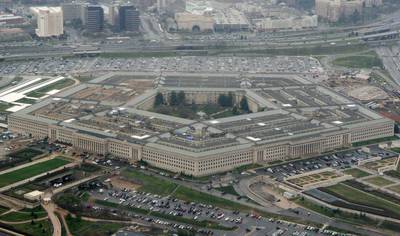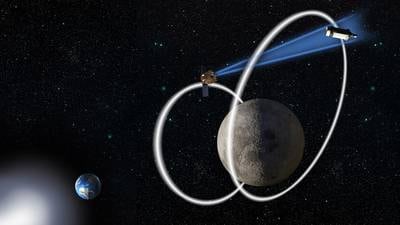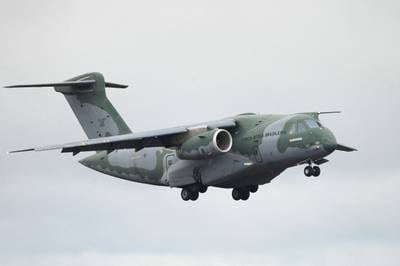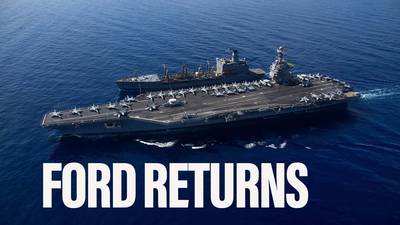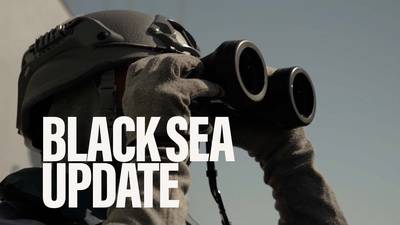WASHINGTON — As commander of Finland’s Air Force, Maj. Gen. Pasi Jokinen is a key player in orchestrating the country’s transition from its F-18 fleet to the F-35, a multibillion-dollar investment decision announced by the Finnish government late last year.
He sat down with Defense News at the Finnish Embassy in Washington in January following a meeting with U.S. Air Force Chief of Staff Gen. CQ Brown at the Pentagon. Jokinen laid out how the Lockheed Martin-built jet managed to win Finland’s H-X program competition, particularly in the crucial evaluation categories of supply security, industrial participation and military capability.
As a nonaligned nation in the far northern corner of Europe, Finland must be able to operate the new fleet without constant access to the F-35 support network if need be, Jokinen explained, as he also shed light on why an unprecedented Swedish offer may have failed to sway the competition.
This interview was edited for length and clarity.
What’s the mood in the Finnish Air Force with regard to the situation in Ukraine?
The mood is stable. In our neighborhood, Ukraine is not the main area of responsibility. Where we are, in the northeast of Europe, it’s pretty much normal activities — air-related events are pretty much the usual. Nothing special going on. Obviously, we monitor the situation very closely and keep an eye on events and adjust our resources if necessary.
Of course, the Russians had the landing craft in the Baltic Sea and Baltic Sea area, so things are getting a little bit more tense there.
On the F-35 decision, what was the Finnish leadership’s thinking when it comes to implementing a “security of supply” plan, which was one of the criteria for selecting the aircraft?
For us, it means there are enough capabilities and broad enough capabilities inside Finland done by Finnish industry that we can maintain operational tempo and sustain operations in the event of a logistical issue preventing us from getting spare parts of support services from the global support system that the F-35 has.
The global support system was considered the baseline, and then there were Finnish, tailored capabilities attached to that. So if Finland were to be isolated from the global flow, there is a defined period of time where we must be able to do stuff inside Finland.
The main breakthrough there was that the F-35 Joint Program Office and Lockheed Martin adapted the global support system to our needs. Once that was planned, it fulfilled our “pass” criteria for that situation.
Does the required infrastructure already exist in Finland, or will that have to be built?
It is being built. There are facilities involved in what we do with the F-18 now, but there need to be adjustments made to those. We will also gain relevant capabilities through the industrial participation package.

How concerned are you about a kind of “black box” character of F-35 elements, for example in logistics and maintenance?
It was never a concern since there are certain “black boxes” in our legacy F-18 fleet, too, where maintenance cannot be done in Finland. And in cases where we can’t open a component and fix it, we will have spare parts on the shelf, and we then send the component away for repair and get it back. That would happen, for example, during the isolated time period that I mentioned earlier.
What would be a scenario that would lead to such an isolated time?
For example, if you have situation like in the Suez Canal, and the flow of materials is so disrupted that parts just don’t arrive. Or maybe there could be a cyberattack on the logistics system preventing you from placing orders or doing any required transactions. Those are the kinds of things that could affect the logistics flow for some time. It’s never meant to be that we are totally independent. We are a very small nation; we don’t have any ideas that we could sustain the F-35 or any H-X candidates alone without the support of the manufacturers and the main user. This would only be some period of time until we recover and get back to normal.
What is the timeline associated with this?
For measurement purposes in the competition, we defined the same time for every candidate and then we assessed against that time frame.
How long is it?
It’s a few weeks. Let’s put it that way.
What does the industrial participation package associated with the F-35 deal look like?
That is the Ministry of Defence’s responsibility, it’s outside [the purview of the] Defence Forces. They set the requirements and published a critical capabilities and technologies list. Those outline the areas we would like to have for cooperation. Within those, there is a direct part, related to the support of the F-35A, and an indirect part, which can be something technology-wise that would be beneficial for the Defence Forces.
The MoD assessed those offers, and as we speak they are negotiating with industry the contracts that are then to be signed, and we can start to work against those.
Is there a national lead company that you expect to be put in place?
We have strategic partnerships with Patria, with Insta. And Millog is one of the companies doing sustainment of the Defence Forces. And then Finnair does certain things for the F-18. Those are the bigger ones in the direct industrial participation category. We continue with that basis.
Is there anything specific to Finland, geography or otherwise, that gave the F-35 the edge in the evaluation category of military capability?
We had a scenario-based approach. It was a tough and complex scenario, technologically advanced, like it is in our area of responsibility. We did the evaluations against the offers that we got, and based on what was in the offer, we kept score and the F-35 won; [it] was the clear winner.

Can you characterize the scenario?
No. It’s a national defense scenario — let’s put it that way. We did three war games, each with a little bit of a different focus. We didn’t assess deployments to anywhere to operate with partners, only national defense of a nonaligned nation, doing it with its own resources.
Where will Finland base the F-35s?
We have two fighter bases currently. Our Air Force has four main bases, and the F-35 will be operating out of all four, and also deploy to civilian airfields and road strips. We have an initial plan, which is not yet finalized, working on the infrastructure side of the house. The F-35 is going to replace the F-18 on the bases; which one is first will be announced during the spring.
Sweden offered to basically merge its Air Force with Finland’s if the Gripen were chosen. What happened there?
That offer, of merging the air forces, was not in the paper that they offered. We had to evaluate what was on paper; it wasn’t there.
But you know about the concept, right?
Yeah, yeah. “One air force, two leaders” — whatever that is. We have not talked about that since, and that is not the plan.
What doctrinal changes do you foresee for the Finnish Air Force when it comes to absorbing the F-35?
There are quite a few hours to be spent for the integration work into the Defence Forces. We’ve been hearing, and we know, that the fifth-generation aircraft is different than the fourth-gen we currently have. With the F-35, we plan to be more integrated into the other branches and services, and anticipate we’ll [increase] cooperation and do operations with the Army and Navy much more than we currently do.
We should do that anyway. We’re going to use the aircraft as a driver — it’s a networked system, meant to be be joint and combined, and that’s a very good starting point.
What is the timeline for phasing out the F-18s and bringing the F-35s online?
The first aircraft are scheduled to arrive in Finland in 2026, with initial training starting in the United States in 2025. Basically we start to pull F-18s out of training and operations in 2025. Exactly how many a year, we’ll see. We obviously need to make sure the F-35 ramp-up plan starts on schedule and then finalize the plan of how we do the switch. Initial operational capability with the F-35 will be in 2028, which is defined as one squadron taking responsibility for air defense.
What will happen with the F-18s?
They are pretty worn out. We’ll use them for spare parts as much as we can. Details remain to be decided. We are prepared to just dispose of them.
You recently had a meeting with the U.S. Air Force chief. What is on the horizon in terms of wider defense cooperation between the two services?
It was a short meeting. With the F-35 in [various parts of] Europe, enhanced opportunities for cooperation was mentioned. For the past 20-plus years we’ve been working with the U.S. Navy, and now [as we work with] the U.S. Air Force, there’s a bit of a different culture. The F-35 is going to be [a big part] of what we’re going to do in the future.
What remains on Lockheed’s to-do list?
They need to finalize their industrial participation contract with the Ministry of Defence. We will try to sign a letter of intent within a month. And then the JPO, Lockheed and us, we can start working toward all the milestones. We expect the industrial participation contract in mid-February. It’s important for us so the delivery time of the air systems can stay on schedule.
What does it mean for the dynamics of defense cooperation among the Nordic nations that Finland selected the F-35?
That remains to be seen. Between us — Sweden and Norway — we do cross-border training up by the Arctic Circle, which means our squadrons can call each other and have common training in one of the nations’ airspace, either two nations or three nations together. The Norwegians just phased out their F-16 and transitioned to the F-35, so hopefully this year we start to train with F-18s, Gripens and F-35s. Denmark is also not far away.
Can I invite you to say anything to the issue of Finland’s nonaligned status and potential NATO membership, which has come up in light of the Ukraine crisis?
I’m afraid not. I’m a tactical aerial commander. I take care of the issues at hand, and that’s obviously a strategic decision to be made from Helsinki. If I’m asked for advice to the politicians, then I’ll say something. Obviously, things are handled the way they are now, and it’s to be determined what kind of discussion comes after that following the situation in Ukraine.
Sebastian Sprenger is associate editor for Europe at Defense News, reporting on the state of the defense market in the region, and on U.S.-Europe cooperation and multi-national investments in defense and global security. Previously he served as managing editor for Defense News. He is based in Cologne, Germany.

